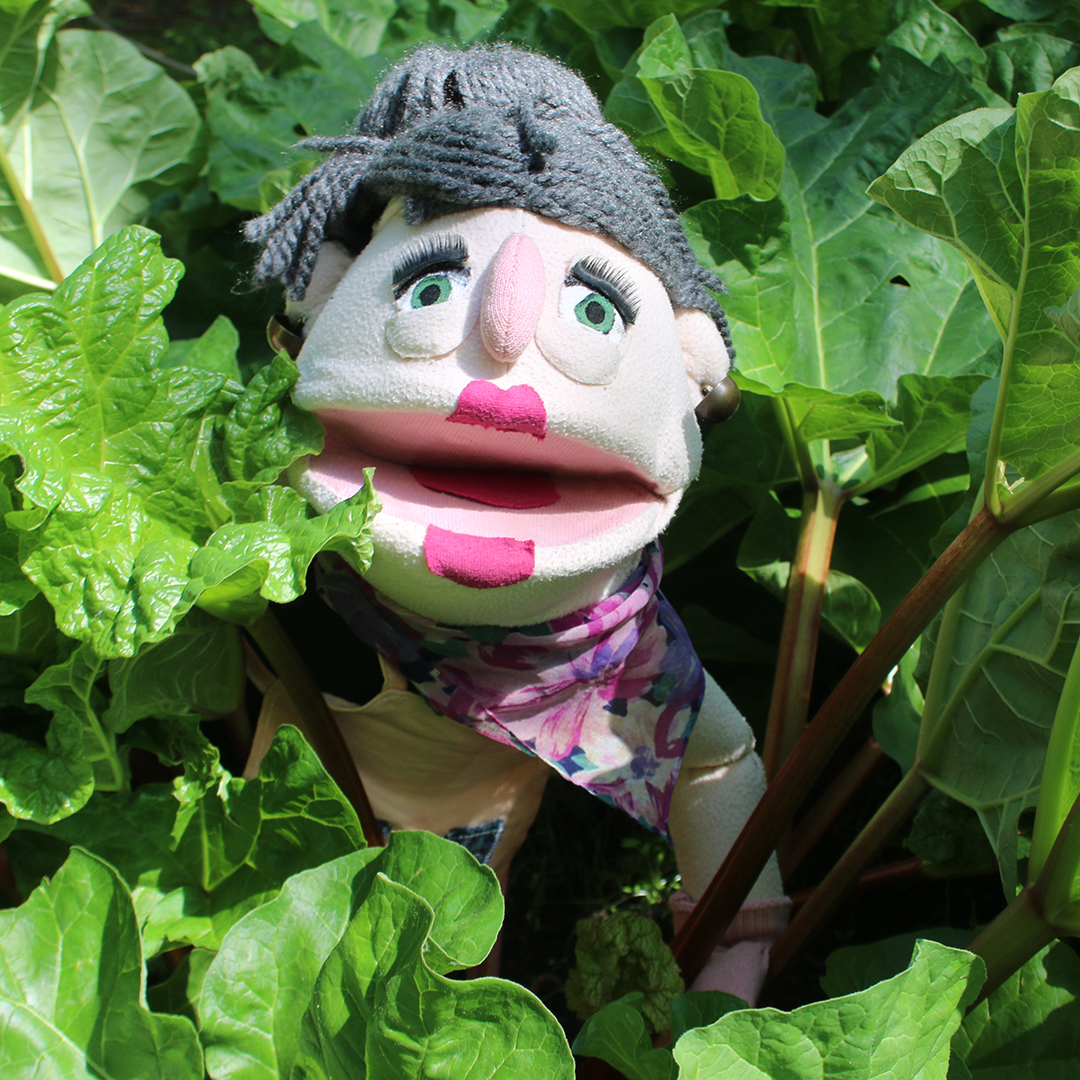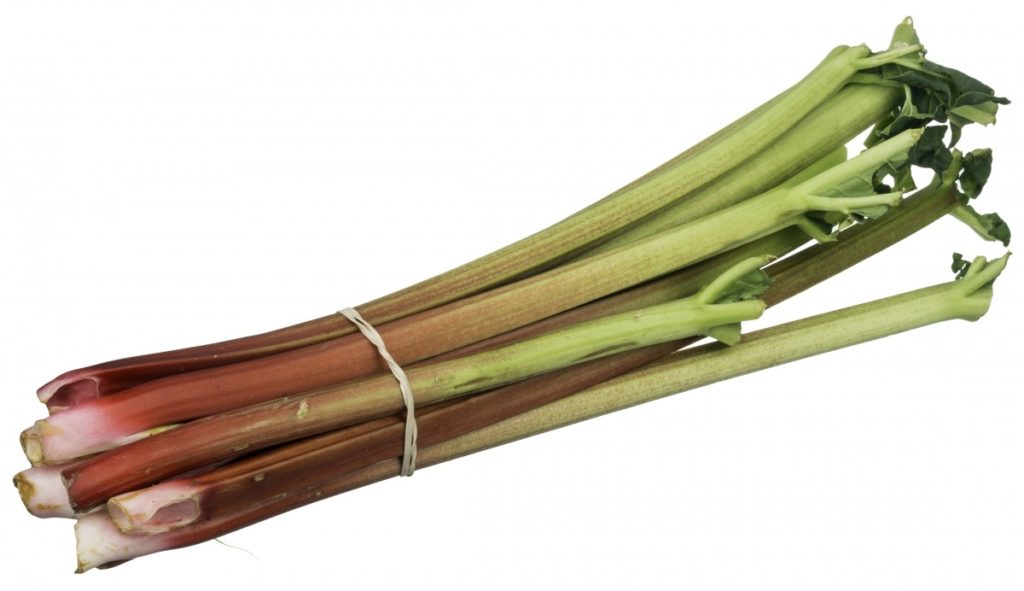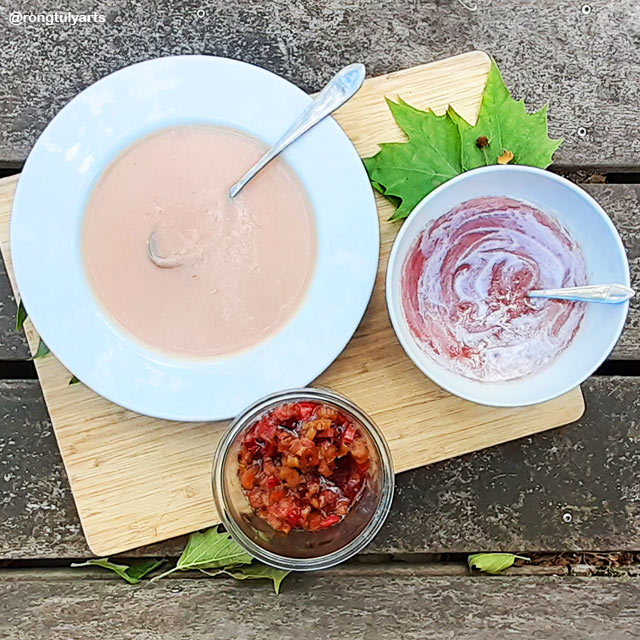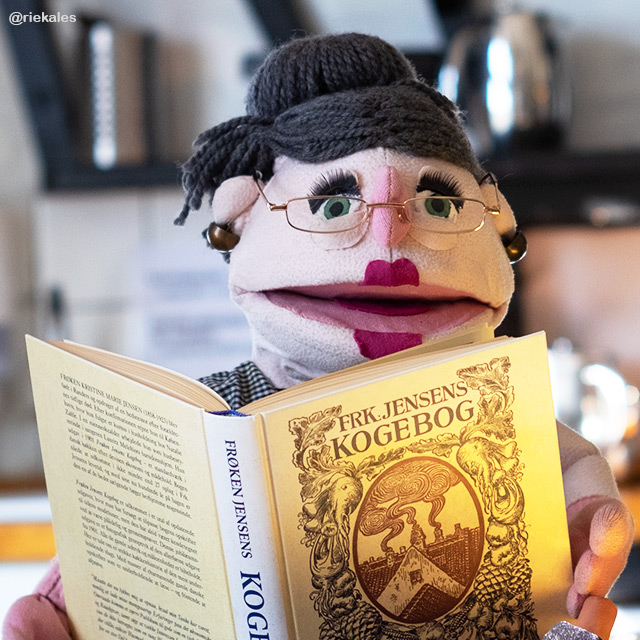RHUBARB (RABARBER) // SEASON: SPRING 🌼, SUMMER ☀️ & AUTUMN 🍂

Grandma Sita is in love with RHUBARD (RABARBER) from Denmark which is renowned for its sour taste and thick, pink/red/greenish stalks. 😍 In fact, the consistency is similar to celery stalks, but is it a fruit or a veggie??
📷 by @rongtulyarts

Rhubarb is a vegetable-derived from cultivated plants in the genus Rheum in the family Polygonaceae. // Source: Wikipedia
- NUTRITION
Rhubarb can be a delicious addition to both sweet and savoury dishes. Rhubarb has a low-calorie content. However, it is a very good source of vitamin K1 and like other fruits and vegetables, it’s also high in fibre, providing similar amounts as oranges, apples, or celery. The fibre in rhubarbs may also offer certain health benefits, for example, decreasing the risk of cardiovascular diseases, boosting heart health by helping the body maintain healthy cholesterol levels and regulating food ingestion, digestion, absorption etc.
Nutrition information for major nutrients of 100g of rhubarb
|
Calories |
21 |
|
Carbohydrates |
4.5 g |
|
Fiber |
1.8 g |
|
Sugars |
1.1 g |
|
Fat |
0.2 g |
|
Protein |
0.9 g |
|
Vitamin A |
102 IU |
|
Vitamin B1 |
0 mg |
|
Vitamin C |
8 mg |
|
Vitamin D |
0 IU |
|
Iron |
0.2 mg |
|
Calcium |
86 mg |
|
Potassium |
288 mg |

- CULTIVATION
Rhubarb requires cold winters to grow. As a result, it’s mainly found in mountainous and temperate regions around the world, especially in Northeast Asia. It’s also a common garden plant in North America and Northern Europe, like Denmark.
- LOCAL PRODUCERS ♻️
From April onwards one can find fresh, Danish grown rhubarb in most supermarkets and all across Denmark there are farms where you can choose and pick rhubarbs yourself!
To find your nearby farm, please click below:
- USES
Due to its sour taste, it’s rarely eaten raw. Instead, it’s normally cooked — either sweetened with sugar or used as an ingredient.
It wasn’t until the 18th century when sugar became cheap and readily available, that rhubarb became a popular food. Before that, it was mainly used medicinally. In fact, its dried roots have been utilized in traditional Chinese medicine for thousands of years.
Only the stalks are eaten, commonly it is stewed with sugar for jams or used in pies and desserts, but it can also be put into savoury dishes or pickled. Rhubarb can also be dehydrated and infused with fruit juice.
The most popular accompanying spice to use is ginger, although cinnamon and nutmeg are also popular additions.
Source: Wikipedia & Healthline
- VEGETARIAN RECIPES 💚
👉🏼Rhubarb recipes by Frøken Jensen 👩🍳📗


- FUN FACT
Mariehønen Evigglad is a Danish song about rhubarb and a ladybird.
Mariehønen Evigglad
gik tur på et rabarberblad
og mødte Søren Snegl, der lå
og sov med sneglehuset på.
Da blev det regn og tordenvejr,
og Evigglad fik våde tæ’r,
så derfor slog hun bankeslag
på sneglehusets lille tag.
Og sneglen råbte højt: Kom ind
i læ for torden, regn og vind,
her er lidt snævert, som du ser,
men der er lunt og tørvejr her.
Så sad de begge to og lo
i Sørens lille sneglebo,
og hvis jeg ikke tager fejl,
blev Evigglad til Madam Snegl.
Og unger fik de mange a’
det kan man se en forårsda’
de flyver højt mod himlen blå
med sneglehus og prikker på.
Forfatter: Halfdan Rasmussen – Komponist: Henning Hansen.
